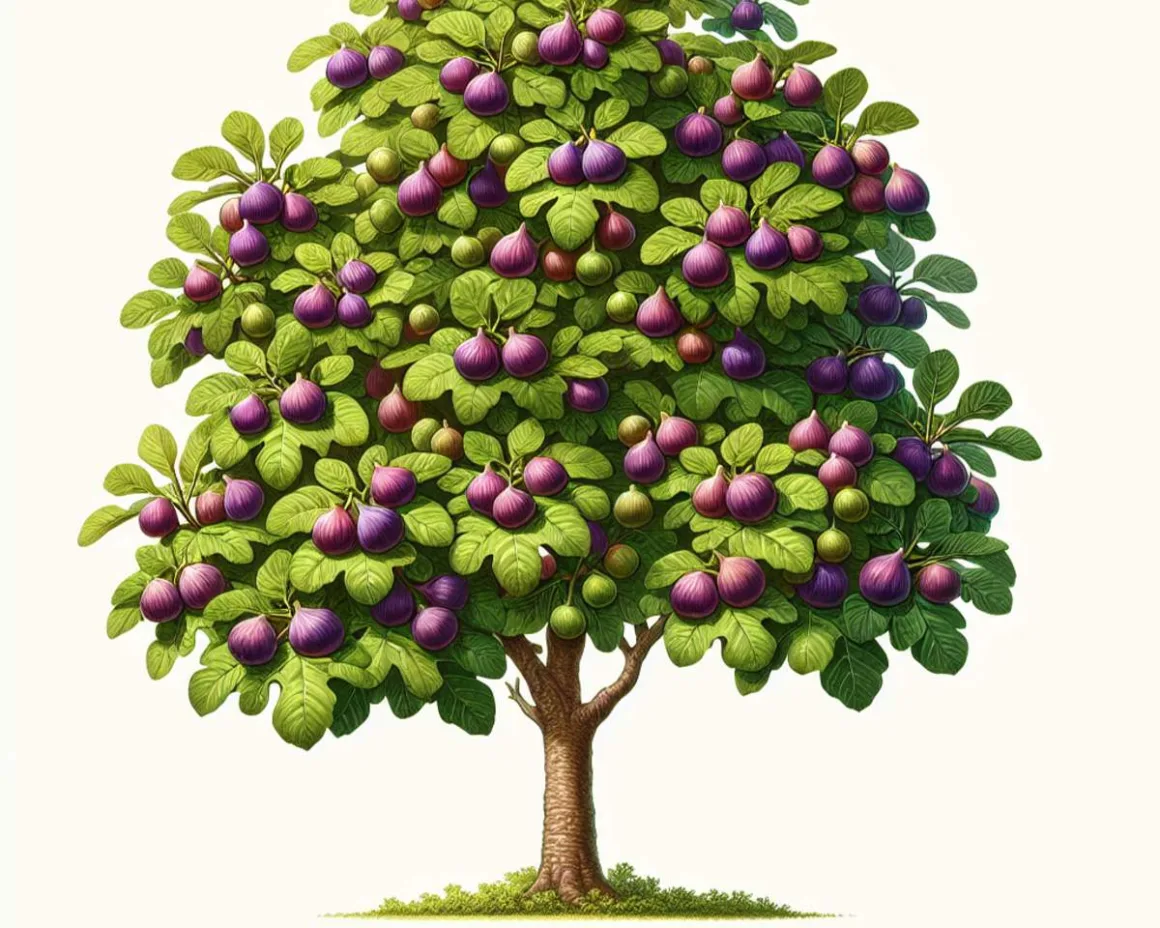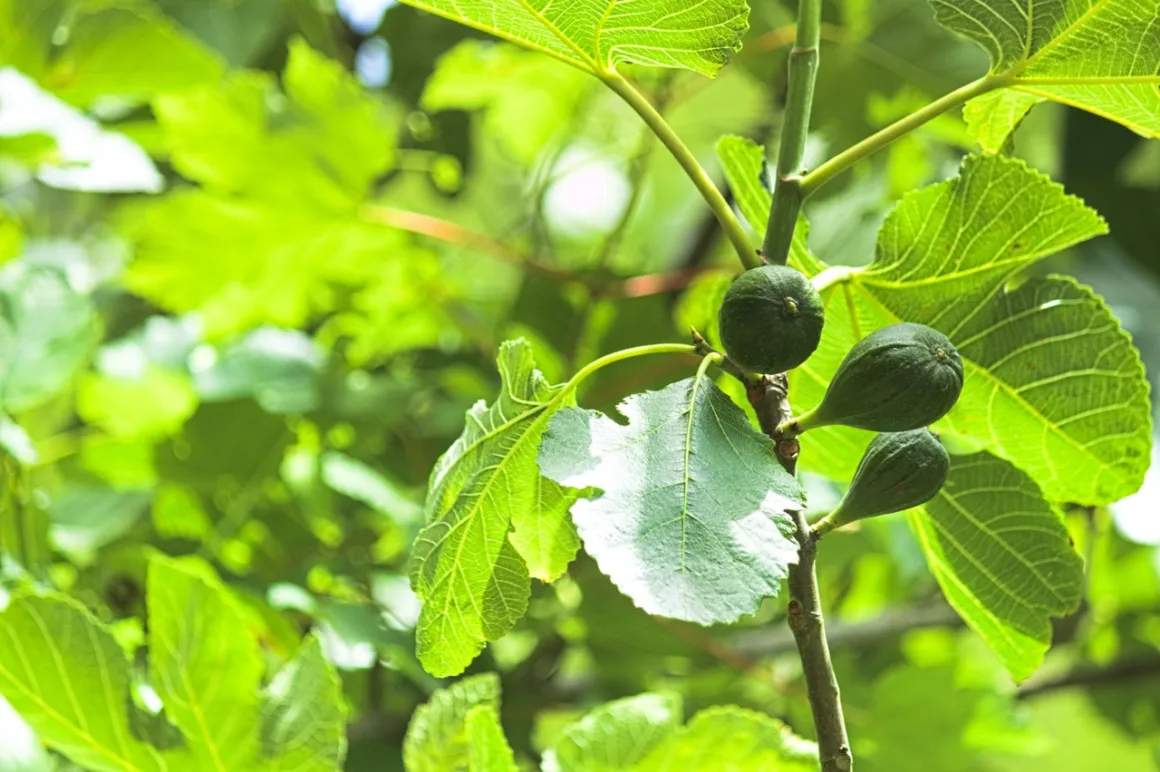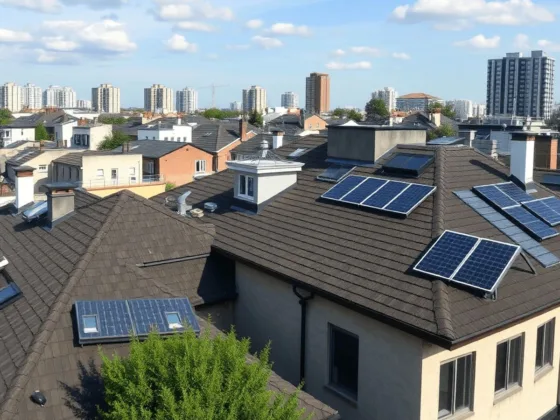Introduction
Fig tree owners often encounter the issue of fruit drop, a problem that can be both puzzling and frustrating. Discovering your carefully nurtured fig tree shedding its fruit prematurely can lead to disappointment and confusion, especially when you are unsure of the underlying cause.
Why is my fig tree dropping fruit? The reasons behind fig fruit drop are varied and sometimes surprising. In this article, we will explore these causes in-depth, providing you with valuable insights and practical solutions to prevent this issue in your own garden.
By understanding the factors contributing to fig tree fruit drop, you will be better equipped to maintain healthy fruit production. From inconsistent watering to lack of pollination and even disease and weather-related causes, each aspect plays a crucial role. For instance, maintaining consistent watering habits is essential to prevent fruit drop, as is being aware of the potential negative impacts of certain practices such as the indiscriminate use of weed killers on your garden’s overall health. Join us as we delve into these issues, helping you achieve a bountiful fig harvest.

1. Understanding the Factors that Cause Fig Tree Fruit Drop
1.1 Lack of Water
Consistent watering is critical for fig trees to ensure healthy fruit production. Fig trees, like many fruit-bearing plants, have specific water requirements that must be met to avoid stress and subsequent fruit drop.
The Importance of Consistent Watering
- Regular hydration: Fig trees need a stable supply of water to support their growth processes, particularly during the fruiting stage.
- Root health: Adequate moisture levels in the soil helps maintain root health, which in turn supports nutrient uptake necessary for fruit development.
Impact of Drought and Inconsistent Watering
Drought conditions or irregular watering schedules can lead to increased fruit drop in fig trees:
- Drought stress: Prolonged periods without water cause the tree to prioritize survival over fruit production, resulting in premature fruit drop.
- Inconsistent watering: Fluctuations between dry and wet conditions create stress for the tree. This inconsistency disrupts the tree’s internal balance, often leading to dropped fruits.
To maintain consistent watering:
- Monitor Soil Moisture: Use a soil moisture meter to keep track of water levels around the root zone.
- Mulching: Apply mulch around the base of the tree to retain soil moisture and regulate temperature fluctuations. This guide on creating stunning enchanted gardens provides helpful tips on how to effectively use mulch.
- Drip Irrigation: Implement a drip irrigation system for even and efficient water delivery directly to the roots. Proper planning and garden design can help you incorporate a drip irrigation system seamlessly.
1.2 Lack of Pollination

Pollination is crucial for fig tree fruit development. Unlike many other fruit trees, fig trees have a unique pollination process primarily involving wasps. These small insects play a vital role in transferring pollen from one fig to another, ensuring that the fruit grows properly.
The Role of Pollinating Insects
- Wasps and Fig Trees: The relationship between fig trees and wasps is mutually beneficial. Wasps enter the fig through a small opening called the ostiole, carrying pollen from other figs. This process is essential for fertilization, leading to healthy fruit development.
- Impact on Fruit Development: If pollination doesn’t happen effectively, the figs may grow partially or fall off too soon. This can be frustrating for growers who may not understand the importance of these insects.
How to Ensure Proper Pollination
To address the issue of fig tree fruit drop due to lack of pollination, consider the following strategies:
- Plant Companion Flowers: Attracting pollinators can be improved by planting flowers that attract beneficial insects like bees and wasps. Flowers such as marigolds, lavender, and daisies are excellent choices.
Tip: Surround your fig tree with companion plants to create an inviting environment for pollinators.
- Hand Pollination: In areas where natural pollinators are scarce, hand pollination can be an effective method. Using a small brush, gently transfer pollen from male figs (caprifigs) to female figs.
Additional Tips for Successful Pollination
- Diverse Garden Design: Including various plants in your garden can attract more insects. For ideas on creating a small garden that respects time and space, visit this guide on small garden design.
- Bee Houses: Installing bee houses near your fig trees provides shelter for solitary bees, encouraging them to stay in your garden and help with pollination.
Understanding these methods helps mitigate issues related to fig tree fruit drop due to lack of water, diseases, and weather conditions. By ensuring adequate pollination, you improve the chances of keeping more fruit on your fig tree.
Fig trees can be affected by various diseases and pests that harm fruit retention. It’s important to check for these issues and treat them properly regularly.
Common Fig Tree Diseases and Pests
- Fig Rust: This fungal disease causes yellow spots on leaves, which eventually turn brown and fall off. It weakens the tree, leading to reduced fruit retention.
- Preventive Measures: Remove and dispose of infected leaves. Apply fungicides during early spring and ensure proper air circulation around the tree.
- Root Knot Nematodes: These tiny worms infect the roots, causing galls that block nutrient absorption. Infected trees may grow slowly and drop more fruit.
- Preventive Measures: Use nematode-resistant rootstocks or solarize the soil before planting. Maintain healthy soil with organic matter like compost.
- Fig Mosaic Virus: This virus shows up as yellow mosaic patterns on leaves, weakening the tree and reducing fruit production.
- Preventive Measures: Plant virus-free stock from reputable nurseries. Control insect vectors such as aphids that spread the virus.
- Insect Pests: Common fig tree pests include scale insects, mealybugs, and spider mites. These pests feed on sap, weakening the tree and causing fruit drop.
- Preventive Measures: Introduce beneficial insects like ladybugs or apply horticultural oils to manage pest populations effectively.
Weather-Related Causes of Fruit Drop
Extreme weather conditions significantly affect fig tree health and fruit retention.
- High Temperatures: Heatwaves can lead to water stress, causing premature fruit drop.
- Mitigation Strategies: Mulch around the tree’s base to retain soil moisture. Provide shade using shade cloths or plant companion trees that offer natural cover.
- Frost Damage: Sudden frost can harm young fruits and buds, leading to fruit drop.
- Mitigation Strategies: Insulate fig trees using frost cloths or burlap wraps during cold snaps. Consider planting fig trees in locations that receive morning sun to reduce frost impact.
- Heavy Rainfall: Excessive rain can cause waterlogged soil, affecting root health and contributing to fruit drop.
- Mitigation Strategies: Ensure proper drainage around the fig tree by creating raised beds or improving soil texture with organic matter.
Regularly check for signs of disease and weather damage to keep your fig trees healthy. Taking preventive measures like mulching, providing shade, using resistant varieties, and practicing good hygiene will help you manage these challenges effectively.
For additional tips on making gardening easier and more efficient, check out this basic guide for beginners.

2. Tips for Preventing Fig Tree Fruit Drop
Understanding the root cause of fruit drop in your fig tree is crucial for effective intervention. Diagnosing fig tree fruit drops involves a systematic examination of various factors.
2.1 Identifying the Underlying Cause
Methods for Diagnosing Fruit Drop Incidents
Examining Leaf Health
- Healthy leaves are a good indicator of overall tree health.
- Look out for yellowing, spotting, or premature leaf drop as these could signal:
- Nutrient Deficiencies: Lack of essential nutrients like nitrogen, phosphorus, or potassium can lead to poor leaf health.
- Pests: Common pests such as aphids, spider mites, or scale insects can cause significant damage to leaves.
- Diseases: Fungal infections like rust or blight may also manifest through leaf discoloration and drop.
Irrigation Patterns
- Analyze your watering schedule.
- Ensure that your fig tree is receiving consistent moisture, especially during dry spells.
- Aim for deep watering once or twice a week rather than frequent shallow watering to encourage strong root growth.
- Use mulch around the tree’s base to retain soil moisture and regulate temperature.
Soil Quality
- Check soil pH levels and nutrient content.
- The ideal pH for fig trees ranges from 6.0 to 6.5. Use a soil test kit to determine pH levels.
- Incorporate organic matter such as compost to improve soil structure and fertility.
- Imbalanced soil can affect root health and nutrient uptake.
- If deficiencies are detected, consider using balanced fertilizers designed specifically for fruit trees.
Pollination Status
- Observe if there are enough pollinators around your fig tree.
- Fig trees rely heavily on specific types of wasps for pollination. Lack of these pollinators can directly impact fruit development.
- Lack of pollination could be a key factor in fruit drop.
- Plant companion flowers that attract pollinators or consider manual pollination techniques if natural pollinators are scarce.
Weather Conditions
Consider recent weather patterns:
- Extreme Temperatures: Both high heat and cold snaps can stress the tree.
- Protect young trees with shade cloths during extreme heat.
- Insulate fig trees using frost cloths or burlap wraps during cold snaps.
- Frost: Early spring frosts can damage developing fruits and blossoms.
- Planting fig trees in locations that receive morning sun can help reduce frost impact by warming the tree earlier in the day.
- Heavy Rainfall: Excessive rain can cause waterlogged soil, affecting root health and contributing to fruit drop.
- Ensure proper drainage around the fig tree by creating raised beds or improving soil texture with organic matter.
By systematically examining these factors, you can identify the underlying causes of fruit drop in your fig trees and take appropriate measures to mitigate them effectively.
2.2 Addressing Water and Pollination Issues
Implementing Proper Watering Techniques
Consistent watering is vital for preventing fig tree fruit drop. Incorrect watering schedules can lead to stress, which manifests as fruit drop. Here are some guidelines for ensuring adequate soil moisture levels around the root zone:
- Regular Watering Schedule: Establish a consistent watering schedule to ensure the soil remains evenly moist but not waterlogged. Aim for deep watering once or twice a week, depending on climate and soil conditions.
- Soil Moisture Monitoring: Utilize a soil moisture meter to monitor the moisture levels in the root zone. The ideal range for fig trees is typically between 25% and 50% soil moisture.
- Mulching: Apply a layer of organic mulch around the base of the tree to help retain soil moisture and regulate temperature fluctuations.
- Drip Irrigation Systems: Install drip irrigation systems to deliver water directly to the root zone, minimizing evaporation losses and providing a consistent water supply.
Enhancing Pollination Success
Pollination is another critical factor affecting fruit retention in fig trees. Without proper pollination, figs may not develop fully, resulting in premature fruit drop. Here are strategies to enhance pollination success:
- Hand Pollination: In areas where natural pollinators are scarce, hand pollination can be an effective technique. Use a small brush or cotton swab to transfer pollen from male figs (caprifigs) to female figs.
- Planting Companion Flowers: Attract pollinators like wasps and bees by planting companion flowers near your fig tree. Flowers such as marigolds, lavender, and sunflowers can help draw these beneficial insects.
- Bee Houses: Installing bee houses in your garden can encourage solitary bees to take residence nearby, boosting pollination rates.
- Creating a Pollinator-Friendly Environment: Reduce pesticide use and provide water sources to create a welcoming habitat for pollinators.
Proactive care and early intervention play a crucial role in maintaining fruit set on fig trees. By following these watering techniques and enhancing pollination efforts, you can significantly reduce the likelihood of fruit drop and promote healthier, more productive fig trees.
2.3 Disease Management and Weather Protection
Effective disease management and weather protection are crucial in preventing fig tree fruit drop. Proactive care and early intervention can significantly enhance fruit retention, ensuring a bountiful harvest.
Good Hygiene Practices
Maintaining good hygiene around your fig tree is essential to prevent diseases that lead to fruit drop. Fungal pathogens often thrive in fallen leaves and debris, making it vital to keep the area clean. Here are some steps to follow:
- Regularly remove fallen leaves and debris: This prevents fungal spores from proliferating and infecting the tree.
- Inspect for signs of disease: Look for symptoms like leaf spots, mold, or unusual growths. Early detection allows for prompt treatment.
- Use fungicides if necessary: Apply appropriate fungicides as recommended by agricultural experts to manage existing infections.
Mulching and Windbreaks
Creating a stable microclimate around your fig tree helps mitigate the adverse effects of extreme weather conditions. Mulching and windbreaks are effective strategies:
Mulching
- Retains soil moisture: A thick layer of mulch around the base helps maintain consistent soil moisture, reducing stress on the tree.
- Regulates soil temperature: Mulch acts as insulation, protecting roots from temperature extremes.
Windbreaks
- Reduces wind stress: Strong winds can cause physical damage to the tree and increase water loss through evaporation. Planting shrubs or erecting barriers can shield your fig tree.
- Protects from frost: Windbreaks can also provide some protection against cold drafts that may lead to frost damage.
Diagnosing Fig Tree Fruit Drop
Diagnosing the specific causes of fig tree fruit drop is fundamental in addressing the problem effectively. Key points to consider include:
- Leaf Health: Examine leaves for signs of disease or pest infestations that could be causing stress.
- Irrigation Patterns: Ensure that watering schedules are consistent and adequate for maintaining soil moisture.
Applying these preventive measures helps in correcting fig tree fruit drop problems before they become severe. Regular inspections and timely interventions are key components in maintaining a healthy fruit set on fig trees. Emphasizing proactive care ensures that your fig trees remain productive year after year.
3. Understanding Overall Fig Tree Care for Consistent Fruit Production
3.1 Nutrient Management with Focus on Nitrogen
Nitrogen’s Role in Fig Tree Growth
Nitrogen is an essential nutrient for fig tree growth and fruit production. It helps in the development of lush green leaves, which are necessary for photosynthesis and overall tree vigor. A lack of nitrogen can result in slow growth, yellowing of leaves, and fewer fruits.
Appropriate Fertilization Methods
To maintain adequate nitrogen levels, it is important to use fertilizers that contain a balanced ratio of Nitrogen (N), Phosphorus (P), and Potassium (K). The recommended NPK ratios for fig trees are 10-10-10 or 8-8-8. These ratios provide a well-rounded supply of nutrients for the tree’s overall health.
- Application Timing: Fertilize fig trees in early spring before new growth starts and again in late summer.
- Dosage: Apply about one pound of fertilizer per year of the tree’s age, up to a maximum of ten pounds for mature trees.
For organic options, you can use well-rotted manure or compost. These natural fertilizers not only supply nitrogen but also improve soil structure and promote beneficial soil organisms.
Monitoring Nitrogen Levels
Regularly check the color of your fig tree leaves and observe its growth patterns to assess if additional nitrogen is required. Dark green leaves indicate sufficient nitrogen levels, while pale or yellow leaves may indicate a nitrogen deficiency.
3.2 Pruning Strategies for Optimal Fruit Set
Benefits of Pruning
Pruning plays a crucial role in maintaining healthy fig trees and maximizing fruit production. Here are some key benefits of pruning:
- Sunlight penetration: Proper pruning helps create an open canopy structure, allowing sunlight to reach all parts of the tree, including the inner branches. This promotes better fruit ripening and reduces the risk of diseases.
- Size control: Fig trees can grow quite large if left unpruned. Regular pruning helps manage their size, making it easier to harvest fruits and perform necessary maintenance.
- Air circulation: Removing dead or overcrowded branches improves air movement within the tree, reducing the chances of fungal infections.
When and How to Prune
- Timing: The best time to prune fig trees is during their dormant season, usually in late winter or early spring before new growth appears.
- Techniques:
- Heading cuts: Trim the tips of branches to encourage branching and bushier growth.
- Thinning cuts: Remove entire branches at their point of origin to eliminate overcrowding and improve light penetration.
It’s important to avoid over-pruning, as this can weaken the tree and reduce fruit production. Stick to removing only about 20% of the total canopy each year.
3.3 Dealing with Dry Spells and Nematodes
Impact of Dry Spells on Fig Trees
During dry periods, fig trees can suffer from water stress, leading to wilting leaves and premature fruit drop. Maintaining adequate soil moisture levels is crucial for their survival and productivity.
Strategies for Managing Dry Spells
Here are some effective strategies to cope with dry spells:
- Mulching: Apply a thick layer of organic mulch, such as wood chips or straw, around the base of the tree. This helps retain soil moisture, suppresses weed growth, and regulates soil temperature.
- Drip Irrigation Systems: Install a drip irrigation system for targeted watering directly to the root zone. This ensures efficient water usage and minimizes evaporation.
Management of Root-Knot Nematodes
Root-knot nematodes are microscopic worms that can infest fig tree roots, causing knots or galls to form. These galls disrupt the flow of water and nutrients, leading to stunted growth and nutrient deficiencies in the tree.
Preventive Measures and Treatments
To prevent and manage nematode infestations:
- Solarization: During hot summer months, cover the soil around the fig tree with clear plastic sheeting. This helps trap solar heat and kill nematodes present in the top layers of soil.
- Resistant Rootstocks: When planting new fig trees, choose varieties that are known to have some resistance against root-knot nematodes. This can help reduce the severity of infestations.
Regular monitoring of your fig trees is essential to catch any signs of nematode damage early. If an infestation is detected, you may need to consult with a local extension service or horticulturist for specific treatment recommendations.
Understanding these key aspects of fig tree care—nutrient management focusing on nitrogen, strategic pruning practices, and dealing with environmental stresses—will go a long way in ensuring consistent fruit production from your fig trees.
3.2 Pruning Strategies for Optimal Fruit Set
Pruning is a crucial aspect of fig tree care that directly impacts fruit set and overall health. Adopting an effective pruning strategy helps maintain an open canopy structure, facilitating sunlight penetration essential for ripening figs.
Benefits of Pruning:
- Enhanced Sunlight Penetration: Pruning ensures that sunlight reaches all parts of the tree, promoting even ripening of fruits.
- Improved Airflow: An open canopy reduces humidity levels around the foliage, minimizing the risk of fungal diseases.
- Stimulated Growth: Proper pruning encourages new growth, which can lead to increased fruit production in subsequent seasons.
When to Prune:
- Dormant Season: The ideal time to prune fig trees is during their dormant period, typically in late winter before new growth begins. This timing minimizes stress on the tree and facilitates quicker recovery.
- Summer Pruning: Light pruning can be done in summer to remove any dead or diseased wood and to manage the tree’s shape.
How to Prune Different Types of Fig Trees:
Young Trees:
- Focus on establishing a strong central leader and well-spaced lateral branches.
- Remove any suckers or low-growing branches to direct energy towards the main structure.
Mature Trees:
- Remove crossing branches and those growing inward to maintain an open canopy.
- Thin out crowded areas to enhance light penetration and airflow.
Common Pruning Mistakes to Avoid:
- Over-Pruning: Removing too much foliage can stress the tree and reduce its ability to photosynthesize effectively.
- Improper Cuts: Make clean cuts just above a bud or branch junction using sharp pruning tools to prevent damage and promote healthy regrowth.
- Neglecting Dead Wood: Always remove dead or diseased branches promptly to prevent the spread of pathogens.
Adopting a holistic approach to fig tree care, including proper pruning techniques, helps minimize fruit drop incidents. Incorporating these practices ensures your fig tree remains healthy and productive season after season.
3.3 Dealing with Dry Spells and Nematode Infestations
Impact of Dry Spells on Fig Trees
Dry spells can have a significant impact on the health of fig trees, often causing them to lose their fruits. It’s important to make sure that the soil has enough moisture during these periods. Here are some techniques you can use to ensure that the roots of your fig tree stay hydrated:
- Water deeply once every 1-2 weeks, making sure that the water goes at least 18 inches into the ground.
- Use mulch around the base of the tree to help retain moisture and regulate the temperature of the soil.
Some signs that your fig tree is experiencing drought stress include:
- Leaves that are wilting or turning yellow
- Fruits falling off prematurely
- Fruits that have cracks or splits
Taking a holistic approach to caring for your fig tree, which includes proper watering methods, can help reduce the chances of fruit drop happening.
Root-Knot Nematode Management
Root-knot nematodes are tiny pests that live in the roots of fig trees and disrupt their ability to get nutrients and water. It’s important to be able to identify and deal with these pests in order to keep your trees healthy.
Here are some signs that your fig tree might have a root-knot nematode infection:
- Roots that are swollen or have galls (knots) on them
- Slow or stunted growth
- Leaves that are turning yellow
- A decrease in the amount of fruit produced
There are several ways you can manage root-knot nematodes:
- Soil Solarization: Covering the affected soil with clear plastic during the hottest months and leaving it there for 4-6 weeks can help increase soil temperatures and kill off nematodes.
- Crop Rotation: Avoid planting figs in the same spot year after year. Instead, rotate them with other plants that nematodes don’t like.
- Using Resistant Varieties: Some types of fig trees are naturally more resistant to root-knot nematodes than others. Choosing these varieties can help reduce the chances of an infestation.
- Introducing Beneficial Nematodes: Certain types of nematodes actually eat root-knot nematodes. Adding these beneficial nematodes to your soil can help control the pest population.
In addition to these measures, it’s also important to keep your soil healthy by using organic fertilizers and watering your trees properly. This will help them stay strong against both drought stress and nematode infestations, ensuring that you have a good harvest of figs all season long.
4. Recommended Fig Tree Varieties for Better Fruit Retention
Selecting the right fig tree variety is crucial for minimizing fruit drop and ensuring a bountiful harvest. Certain varieties are bred to be more resilient against environmental stresses and common issues that cause fruit drop. Here are three popular and highly recommended fig tree varieties: Celeste, Brown Turkey, and Kadota.
4.1 Overview of Celeste, Brown Turkey, and Kadota Varieties
Celeste Fig Tree
The Celeste fig tree is often referred to as the “sugar fig” due to its exceptionally sweet fruit. This variety is one of the most popular among home gardeners, particularly in regions with hot summers.
- Characteristics: Small to medium-sized figs with light brown to violet skin.
- Fruiting Habits: Produces fruit early in the season, typically around mid-summer.
- Resilience: Known for its high tolerance to heat and drought conditions, making it less likely to experience fruit drop due to water stress.
- Pollination: Self-pollinating, meaning it does not rely heavily on external pollinators.
- Maintenance: Requires minimal pruning and care once established.
Brown Turkey Fig Tree
The Brown Turkey fig tree is another excellent choice for those looking to minimize fruit drop while enjoying a generous yield.
- Characteristics: Medium to large figs with a purplish-brown skin and amber flesh.
- Fruiting Habits: Produces two crops per year—an early crop (breba) on old wood and a main crop on new growth.
- Resilience: Highly adaptable to various soil types and climate conditions, although it performs best in warm climates.
- Pollination: Also self-pollinating, reducing the need for additional pollinator plants.
- Maintenance: Benefits from regular pruning to encourage new growth and improve air circulation around the branches.
Kadota Fig Tree
The Kadota fig tree is renowned for its versatility and consistent fruit production, making it a reliable choice for gardeners facing unpredictable weather patterns.
- Characteristics: Medium-sized figs with a greenish-yellow skin and amber flesh.
- Fruiting Habits: Typically produces one main crop per year, which ripens late in the season.
- Resilience: Shows strong resistance to splitting and bruising, which can be common issues in more delicate varieties.
- Pollination: Not strictly self-pollinating; occasional aid from pollinators like wasps can enhance fruit set.
- Maintenance: Prefers well-drained soil and benefits from mulching to retain moisture around the root zone.
Key Takeaways
Choosing fig tree varieties that align with your local climate conditions and maintenance capabilities can significantly reduce instances of fruit drop. The Celeste, Brown Turkey, and Kadota varieties each offer unique advantages:
- The Celeste excels in heat tolerance and requires minimal care.
- The Brown Turkey provides multiple harvests and adapts well to various environments.
- The Kadota offers robust resistance against physical damage and thrives with adequate moisture management.
By understanding these cultivars’ unique characteristics, you can ensure better fruit retention and enjoy a more productive fig tree garden.
Special Considerations for Growing Fig Trees in SC Clay County (Zone 8A)
Cultivating fig trees in SC Clay County or similar climates within Zone 8A presents its own set of challenges and opportunities. Understanding these specific conditions can help ensure healthy growth and consistent fruit production.
Soil Characteristics and Amendments
SC Clay County is known for its heavy, clay-rich soil, which can impact fig tree health:
- Drainage: Ensure proper drainage by planting fig trees in raised beds or mounds. Clay soil retains water, leading to root rot if not properly managed.
- Soil Amendments: Improve soil structure by incorporating organic matter such as compost or well-rotted manure. This enhances aeration and nutrient availability.
- pH Levels: Aim for a slightly acidic to neutral pH (6.0-7.5). Test your soil periodically and amend with lime or sulfur as needed.
Watering Strategies
Consistent watering is crucial, especially during the hot summer months:
- Mulching: Apply a thick layer of organic mulch around the base of the tree to retain moisture and regulate soil temperature.
- Irrigation Systems: Consider installing drip irrigation to provide consistent moisture without waterlogging the roots.
Winter Protection
Fig trees in Zone 8A may require some winter protection due to occasional freezing temperatures:
- Wrapping: Use burlap or frost cloth to wrap young trees during cold snaps.
- Mulch Insulation: Apply extra mulch around the base of the tree to protect the roots from frost damage.
- Microclimates: Plant fig trees near south-facing walls or other structures that can provide some warmth and shelter from cold winds.
Pest and Disease Management
Clay soils and humid conditions can be conducive to certain pest infestations and diseases:
- Regular Inspections: Check for common pests like aphids, scales, and nematodes. Early detection allows for prompt treatment.
- Fungal Diseases: Remove fallen leaves and debris to prevent fungal pathogens such as leaf spots and rust from taking hold.
- Biological Controls: Introduce beneficial insects like ladybugs to combat pest populations naturally.
Variety Selection
Choosing the right fig variety can make a significant difference in your success:
- Cold-Hardy Varieties: Opt for varieties known for their cold tolerance, such as ‘Celeste’ or ‘Brown Turkey.’
- Disease Resistance: Select varieties that are resistant to common fig diseases prevalent in humid climates.
Pruning Practices
Proper pruning techniques are essential for managing fig trees in SC Clay County:
- Timing: Prune during late winter when the tree is dormant. This reduces stress and encourages vigorous spring growth.
- Canopy Management: Maintain an open canopy structure to improve air circulation, which helps reduce disease incidence.
By following these region-specific tips for fig tree care, you can increase the likelihood of a successful harvest in SC Clay County. Remember to regularly inspect your trees for pests and diseases, choose appropriate varieties, and employ proper pruning techniques. With a little attention and care, you can enjoy the sweet and delicious fruits of your fig tree for years to come.”

Conclusion
Understanding the primary reasons for fig trees not producing fruit is essential for effective management. Key factors include:
- Watering Consistency: Regular and sufficient watering is crucial. Droughts and irregular watering schedules can significantly increase fruit drop.
- Pollination: The role of pollinating insects, such as wasps, cannot be understated. Lack of proper pollination often leads to incomplete fruit development and subsequent drop.
- Disease and Weather: Common diseases and pests can compromise fruit retention. Additionally, extreme temperatures—both heatwaves and frosts—can trigger fruit drop. Implementing measures like insulation or shade protection can help mitigate these effects.
By recognizing these factors, you can take proactive steps to ensure your fig tree remains healthy and productive. Diagnosing the specific causes behind fruit drop incidents allows for targeted interventions—whether adjusting irrigation practices, enhancing pollination efforts, or managing environmental stresses. Applying this knowledge will support a successful harvest season and maintain the vitality of your fig tree.
FAQs (Frequently Asked Questions)
Fig tree owners often encounter the issue of fruit drop, which can be frustrating, due to various factors such as lack of water, pollination issues, diseases, and adverse weather conditions.
The surprising reasons behind fig tree fruit drop include lack of water, pollination issues, diseases, and adverse weather conditions. These factors can contribute to the frustration experienced by fig tree owners.
Lack of water can lead to increased fruit drop in fig trees. Drought and inconsistent watering schedules can have a negative impact on fruit production, emphasizing the importance of consistent watering for healthy fruit development.
Proper pollination is crucial for preventing fig tree fruit drop. Pollinating insects, such as wasps, play a key role in the pollination process and ensuring adequate pollination can help maintain healthy fruit production.
Common fig tree diseases and pests can impact fruit retention, while extreme temperatures, frost, or heatwaves can trigger fruit drop. Preventive measures such as regular inspections for diseases and protection from adverse weather conditions are essential for minimizing fruit drop incidents.
Diagnosing the specific reason behind fig tree fruit drop incidents can involve examining leaf health and irrigation patterns. Identifying the underlying cause is crucial for implementing effective solutions to prevent further fruit drop.
Proactive care plays a key role in addressing water and pollination issues in fig trees. Implementing proper watering techniques and ensuring adequate soil moisture levels around the root zone can help prevent fruit drop. Additionally, strategies to enhance pollination success such as hand pollination or installing bee houses can contribute to consistent fruit production.
Practicing good hygiene by removing fallen leaves and debris can help prevent diseases that contribute to fruit drop. Additionally, measures like mulching and windbreaks can create a more stable microclimate for fig trees, offering protection from adverse weather conditions that may trigger fruit drop.
Nitrogen plays a crucial role in supporting fig tree growth and fruitfulness. Understanding nutrient management with a focus on nitrogen is essential for maintaining healthy fig trees and minimizing the risk of fruit drop incidents.
Pruning contributes to optimal fruit set in fig trees by maintaining an open canopy structure and facilitating sunlight penetration for ripening figs. Proper pruning techniques are essential for promoting healthy fruit production while minimizing the risk of fruit drop.
When growing fig trees in SC Clay County or similar climates (Zone 8A), region-specific tips should be considered due to potential challenges like winter protection. Understanding these special considerations is important for successful fig tree cultivation in these areas.
Factors such as lack of water, pollination issues, diseases, adverse weather conditions, nutrient management, pruning techniques, and region-specific considerations should be taken into account when diagnosing and addressing fig tree fruit drop issues. Proactive management strategies based on these factors are crucial for ensuring a bountiful harvest season.










